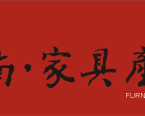
即將消逝的瞬間-關於時間的六種視野
The Moment that Comes is about to Go- 6 Visions about Time
一種可能的全球倫理道德體系,必須處於記憶與當下之間;處於這個過渡性的、來回往復的運動中,處在陰魂遲遲不散的過去和拒絕按時誕生的未來之間。- 霍米.巴巴(Homi K. Bhabha)
A potential global system of ethics and morality must exist between our memory and the present moment, between this transitional, alternating movement, and between the lingering ghost of the past and a future that refuses to come into being when expected. –Homi K. Bhabha

歷史並非恆常不變的事實或真理,對「過去」的詮釋,體現了我們「現在」的價值與倫理觀,也因此成為「未來」構成的能動力。「當下」因而揉雜了「過去」與「未來」,成為一個轉瞬即逝的時間集合體。【即將消逝的瞬間】的參展藝術家即透過這種時間的共時性,回看過去以對當下進行解構批判,並同時反向投射出一種新的倫理觀所建立的未來。他們的作品所呈現的時間觀,並非單一的線性系統,而是在來回往復的動態過程中,向想像的未來逐步推進。
Our history is not comprised of unchanging facts or truths. Our interpretation of the “past” actually illustrates our “present” values and ethics, and hence, a driving force that constitutes our “future.” Therefore, “the present moment” integrates the past and the future, and becomes an ephemeral, transient temporal unity. The participating artists in The Moment that Comes is about to Go have cast a retrospective glance to deconstruct the present, simultaneously offering their critiques and postulating a future based on a new ethics. The concept of time represented in their works is not linear; instead, it surfaces as a dynamic, alternating process, gradually progressing towards an imagined future.

陳思含與印度藝術家 Vaibhav Raj Shah 合作的錄像作品<KAL>,在印度文裡同時代表了「昨天」與「明天」,也就是「遠離今天的一天」。本作品以哲學角度探討印度語言中的時間觀及當地深厚的宗教文化,本展展名【即將消逝的瞬間】,即是出自於片中一首印度歌謠的歌詞。<Tambat Ali> 則為她在印度駐村期間,拍攝種姓制度下,以銅器製造業世代相傳的社區,與現代性的城市相比,片中凸顯了一個不同時序並存的異質空間。<解體概要>作者林仕杰,承襲了實驗電影界透過資料影像拾荒(found footage)書寫歷史的概念,藉由打亂影片敘事線,讓觀者反思歷史是否如同一道咒語,形塑無法掙脫的集體潛意識。郭俞平的<凹洞>透過虛構的現場錄像,回視自身生命經驗和中興新村的一段歷史,從而批判中興新村如何以類殖民者特區的方式,向四周傳統農業社會演示著進步與現代化的烏托邦生活。邱杰森以<不存在的完美境地>三部曲,探討後現代終結之後,我們如何重新面對現實,讓理想和烏托邦成為一個永恆的驅力。汪紹剛創作的<Teguh>,透過影片旁白回溯主角對哥哥的思念與記憶,語言的敘事線混疊著現實與虛構的影像,旁白與影像的時空不斷地相互錯置,在過去與現在、邊緣與中心的來回移動中,探討了移工在全球化時代的快速流動和孤立處境。
KAL is a collaborative video by Szu-Han Chen and Indian artist, Vaibhav Raj Shah. The Indian title refers to both “yesterday” and “tomorrow,” which is “a day away from today.” From a philosophical perspective, this work explores the concept of time and the richly profound religious culture embedded in the Indian language. The exhibition title, The Moment that Comes is about to Go, also originates from the lyrics of an Indian ballad in the video. Another video, Tambat Ali, made during Chen’s residency in India, is her documentation of a community founded on making copperware generation after generation due to the rigid caste system. Comparing to a modern city, the video foregrounds a heterogeneous space that allows the co-existence of different times. A Short History of Decay, Shih-Chieh Lin employs the concept of inscribing history through found footage, an approach often used in experimental films. By disorienting the narrative of the video, the artist attempts to let audiences reflect upon the fact that our history might be like a binding spell, shaping our collective subconsciousness that could not be escaped. On the other hand, through the video of fictitious site, Yu-Ping Guo’s A Pit re-examines his own experience and a piece of history in Zhongxing New Village, and critically represents how Zhongxing New Village, like a special semi-colonialist zone, demonstrates a utopian life of progress and modernization to its surrounding agricultural society. In No-place I, II, III, Chiehsen Chiu discusses how human beings face reality after the end of the postmodern era, making ideals and the utopian dream an ever-lasting driving force. Shao-Gang Wang’s Teguh retraces the protagonist’s remembrance and memory of his elder brother through the narration. The linguistic narrative is overlapped with real and fictitious images. The time and space of the narration and the image constantly alternates, moving back and forth between the past and the present as well as the marginal and the center while investigating the rapid mobility and isolation predicament of migrant workers in a globalizing context.

註:本展作品為當代館2015年當代影像聚場公開徵件之作,由當代館展覽組針對入選作品之內容屬性予以歸納後,以主題策展方式集結展出。
Note: The works included in this exhibition are selected from the entries of the MOCA Video Open Call in 2015. The museum’s Exhibition Team has viewed the works and curated the thematic exhibition based on shared aspects in these works.
圖文來源:台北當代藝術館













留言版Comment